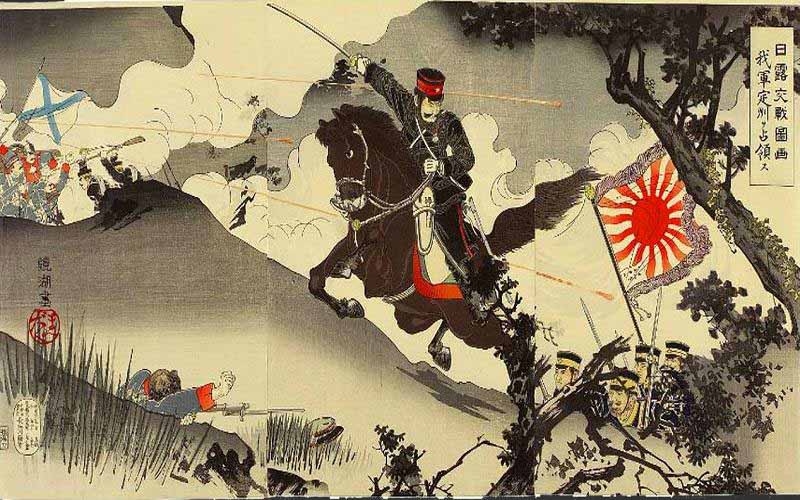
Pin on Recent Projects
by Stephen Welcome to 19th Century, a blog dedicated to exploring the rich history of the 1800s. In this article, we delve into the fascinating world of 19th century Japanese clothing, uncovering the intricate designs, traditional garments, and cultural influences that shaped fashion during this era.

Pin on Japanese Fashion History
The uptake of yofuku (Western clothing) filtered down through the classes, however many women found the new fashions impractical for Japanese living and for decades to come it was still common for women to wear kimono, increasingly paired with contrasting accessories like hats, scarves, gloves, umbrellas and handbags. Taisho: 1912-1926

Pin on Costume
The Taisho Period ended in 1926 when the eponymous emperor died and Emperor Hirohito, who would lead Japan in World War II, assumed power. The other films in the series all examine the era's.

Emperor Taisho the Order of the Garter Emperor Taishō Wikipedia
The Heian period (794-1192) saw the introduction of the most iconic garment, the kimono. The kimono, which means "something to wear" in Japanese, is the most popular form of traditional Japanese fashion. In addition, there are other types, too, which include the hakama and the yukata.

Taisho School Girl in 2021 Japanese outfits, Taisho era fashion
Taishō eraTaishō jidai [taiɕoː dʑidai] was a period in the history of Japan dating from 30 July 1912 to 25 December 1926, coinciding with the reign of Emperor Taishō [1] The new emperor was a sickly man, which prompted the shift in political power from the old oligarchic group of elder statesmen (or Imperial Diet of Japan.

Elegant Taisho Period (19121926) wedding kimono. Japanese embroidery
The Taisho period is a short period in Japanese history between 1912 to 1926. It was the years of democratic movements across the political, economic and cultural fields.

A photo of a modern woman of the Taisho period (19121927), Japan
During the Taisho period (1912-1926), wearing Western clothing continued to be a symbol of sophistication and an expression of modernity. It was in this period that working women such as bus conductors, nurses, and typists started wearing Western clothes in everyday life.

Japanese having bubble milk tea. People of Taisho period drinking
Taishō period (1912-1926) The Taishō period continued the process of adoption and transformation of foreign models. During this period Japan participated in World War I and continued its colonial rule of Korea and Taiwan, occupations dating from the Meiji period.

Teru, at about age 25. Taisho era Retro photography, Vintage japan
During the Meiji and Taisho era (mid-1800s to 1920s), the arrival of Western culture changed many aspects of Japanese society, including fashion. Kimonos were still worn, but people started wearing Western clothes, often for formal events.. In the 1970s, women adopted a fashion style called nyutora/hamatora that featured gold buckles.

Taisho Era History, Culture, and Art of This Period
What is the Taisho Era? The Taisho era (1912-1926) was a relatively short period of Japanese history nestled between the much longer Meiji (1868-1912) and Showa (1926-1989) eras. It was a time of great change, in which Western culture permeated Japanese popular culture and the average lifestyle of Japanese people changed drastically.

Taisho Roman Japanese history, Taisho era, Taisho period
Japanese Fashion Through the Years Read the Story There's a lot more to Japanese fashion than you can imagine. Let's take a look at some major points of fashion in Japan.

Pin2D on Twitter Taisho era, Character design, Art reference
Maki Hakui steps back in time and enters the minds of the radical thinkers of Japan's Taishō era, as a way to look at what's happening in her country today. Words by Maki Hakui. As Philip Zimbardo writes in his book, Man Disconnected, the many factors of contemporary society are now causing a worldwide modern meltdown of manhood.

Wholesale Material Japanese Style Kimono Drress For Women Taisho Girl
1912 - 1926. The Taisho period, or Taisho era, is a period in the history of Japan dating from July 30, 1912, to December 25, 1926, coinciding with the reign of the Emperor Taisho. The new emperor was a sickly man, which prompted the shift in political power from the old oligarchic group of elder statesmen (or genro) to the Diet of Japan and.

Taisho Era Fashion in Yono Taisho era, Fashion, Japanese culture
Taishō period, (1912-26) period in Japanese history corresponding to the reign of the Taishō emperor, Yoshihito (1879-1926). It followed the Meiji period and represented a continuation of Japan's rise on the international scene and liberalism at home. Politically, the country moved toward broader representational government.

Scans Retro Kimono & Hairstyles Kimono japan, Japanese outfits
While the anime takes place in the Taisho era, about when Western-style fashion became vogue in cities, the origins of Western and syncretic fashion in Japan can be found in the preceding Meiji.

Vintage fuisode kimono from the Taisho period 19121926. Owned by a
Japanese clothing during the Meiji period (1867-1912) saw a marked change from the preceding Edo period (1603-1867), following the final years of the Tokugawa shogunate between 1853 and 1867, the Convention of Kanagawa in 1854 - which, led by Matthew C. Perry, forcibly opened Japanese ports to American vessels, thus ending Japan's centuries-long.